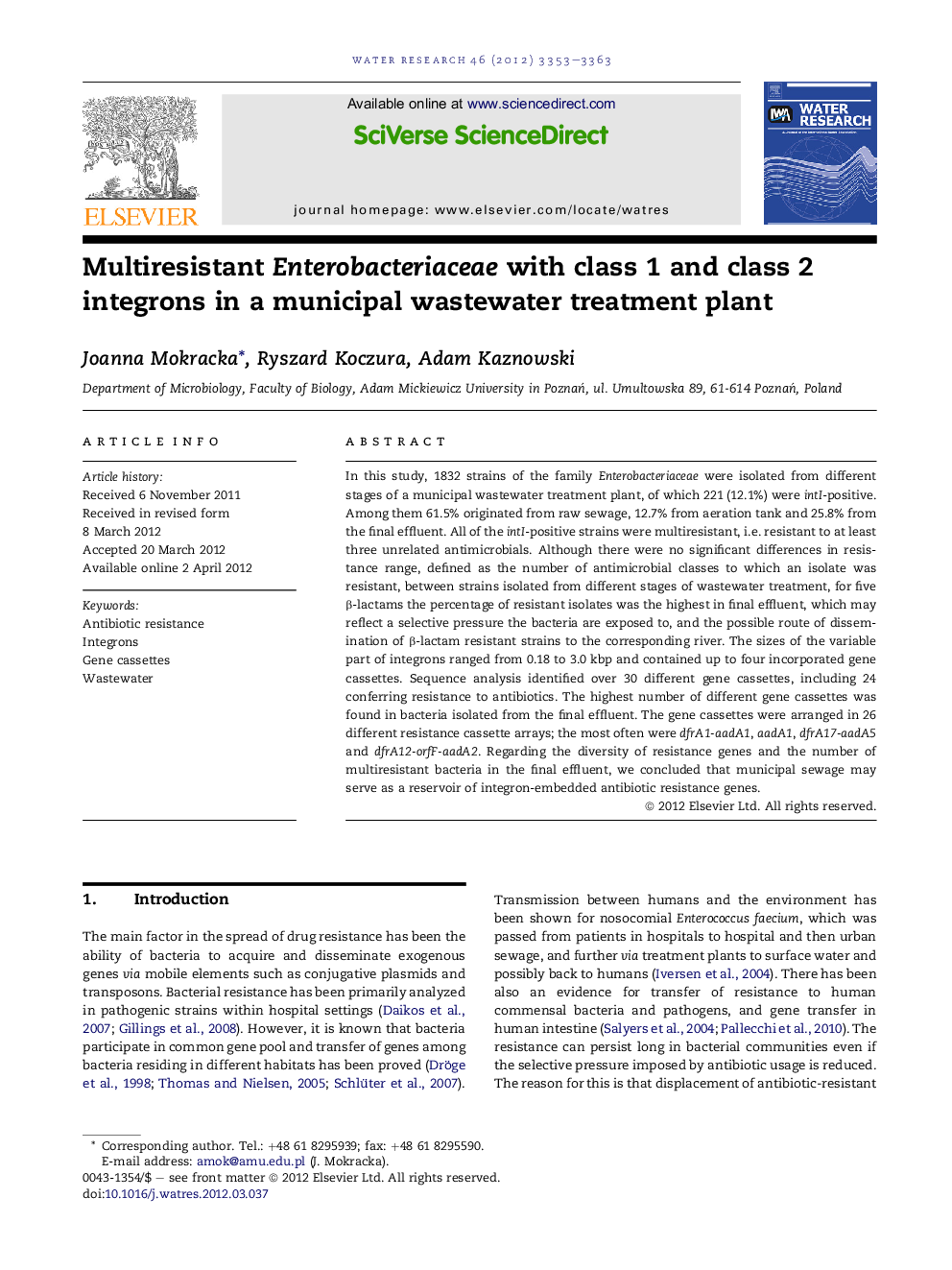| کد مقاله | کد نشریه | سال انتشار | مقاله انگلیسی | نسخه تمام متن |
|---|---|---|---|---|
| 4483351 | 1316885 | 2012 | 11 صفحه PDF | دانلود رایگان |

In this study, 1832 strains of the family Enterobacteriaceae were isolated from different stages of a municipal wastewater treatment plant, of which 221 (12.1%) were intI-positive. Among them 61.5% originated from raw sewage, 12.7% from aeration tank and 25.8% from the final effluent. All of the intI-positive strains were multiresistant, i.e. resistant to at least three unrelated antimicrobials. Although there were no significant differences in resistance range, defined as the number of antimicrobial classes to which an isolate was resistant, between strains isolated from different stages of wastewater treatment, for five β-lactams the percentage of resistant isolates was the highest in final effluent, which may reflect a selective pressure the bacteria are exposed to, and the possible route of dissemination of β-lactam resistant strains to the corresponding river. The sizes of the variable part of integrons ranged from 0.18 to 3.0 kbp and contained up to four incorporated gene cassettes. Sequence analysis identified over 30 different gene cassettes, including 24 conferring resistance to antibiotics. The highest number of different gene cassettes was found in bacteria isolated from the final effluent. The gene cassettes were arranged in 26 different resistance cassette arrays; the most often were dfrA1-aadA1, aadA1, dfrA17-aadA5 and dfrA12-orfF-aadA2. Regarding the diversity of resistance genes and the number of multiresistant bacteria in the final effluent, we concluded that municipal sewage may serve as a reservoir of integron-embedded antibiotic resistance genes.
Figure optionsDownload high-quality image (119 K)Download as PowerPoint slideHighlights
► Sewage treatment does not remove multiresistant bacteria.
► Municipal sewage disseminates integron-bearing bacteria.
► The percentage of β-lactam resistant strains in WWTP is the highest in the final effluent.
Journal: Water Research - Volume 46, Issue 10, 15 June 2012, Pages 3353–3363